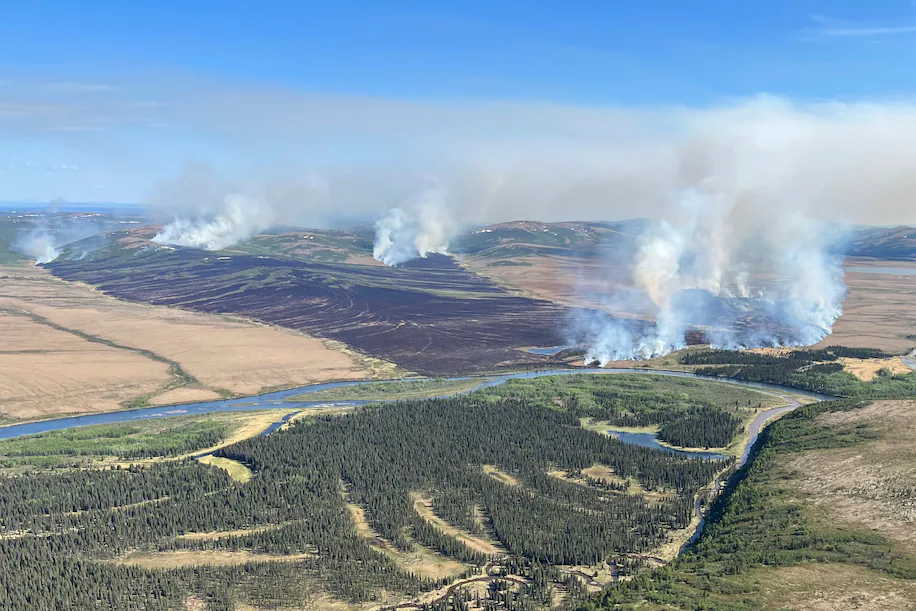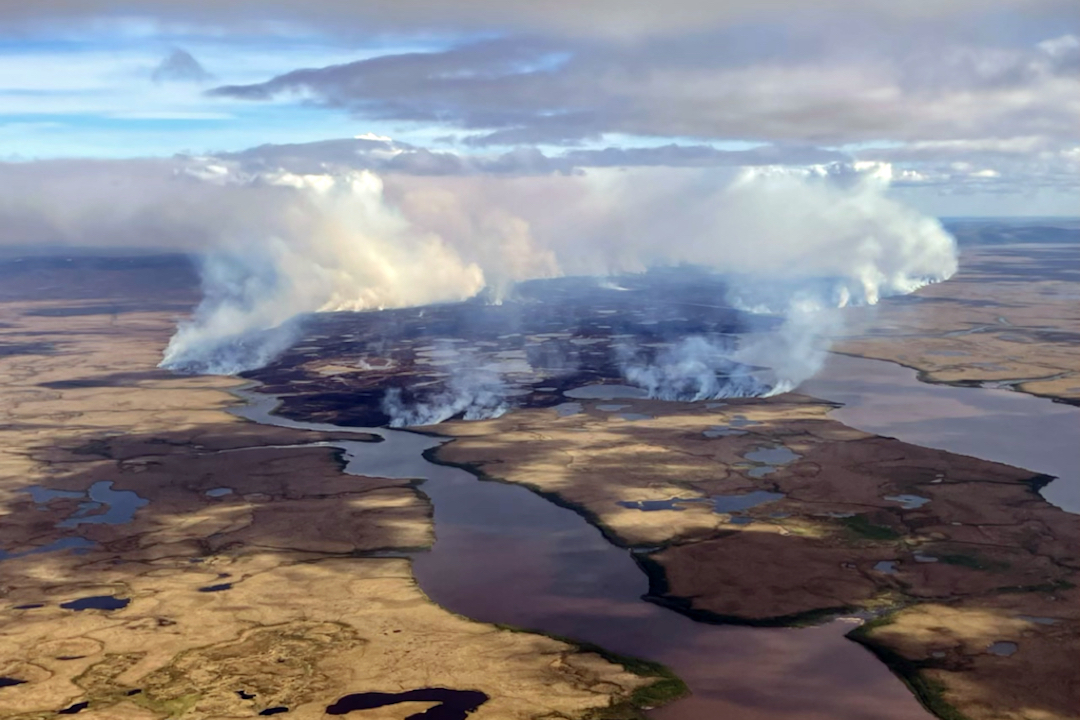
On 4 June, thunderstorms moved across the southern part of Alaska, delivering nearly 5,000 lightning strikes and igniting dozens of wildfires. It was the latest outbreak in a fire season that — after a slow start — has become unusually active. Last week, the state’s fire authorities raised their preparedness level as the area of the state that has burned this year surpassed one million acres (4,000km2) — an area that is 20 times the area larger than normal for this time of year.
The state preparedness level now stands at four (out of five). When the change became active on Wednesday, there were more than 133 active fires. When setting the preparedness level, fire officials consider how many fires there are, as well as how much land is burning, how existing fires are likely to develop and whether new fires can be expected.
Preparedness Level 4, according to the Alaska Wildland Fire Information, a state agency, is declared when multiple areas are experiencing fires that threaten settlements or infrastructure, and is a sign that fire-fighting resources are starting to stretch thin, with at least half of available resources committed to fighting fires. Nationally, the preparedness level is 2, which has meant other states have been able to sent crews and equipment to Alaska to help out; raising the preparedness level makes it likely they will send more.

Wildfire seasons of this magnitude are not unheard of in Alaska; in the past 30 years, wildfires have burned more than a million acres in a season 11 times, but, this year, it has reached this point earlier than ever. Normally, at this point in the season, 50,000 acres have burned.
The worst, though, may be yet to come: late June marks the beginning of the high point of the fire season, and the prediction this year is that extreme dryness in the upper layer of the soil (known as duff), which is mostly composed of decomposed organic matter, and a projected lack of rain have increased the likelihood of more, difficult-to-control fires in the coming month. If those fires cannot be put out, the Alaska Wildland Fire Information warned on 15 June, they will likely remain burning into the August dry season, when the conditions are expected to continue.
Typically, autumn rains put an end to the wildfire season, but, in the years when the rains do not come, fires can continue to burn for weeks. In 2019, for example, a blaze known as the Swan Lake Fire, which also started in June of that year, and was caused by a lightning strike, burned until October and consumed 167,000 acres.
Fires, in and of themselves, are not a sign something is going wrong. Indeed, in Alaska, as in many other natural areas, fire helps release valuable nutrients trapped in the soil and rejuvenates vegetation. Fire also makes new homes for many different species of animals by leaving standing dead and fallen trees. But, in Alaska, fires are becoming more intense, and the season is getting longer. What makes this year’s fire season stand out — and part of the reason why land than normal has already been burned — is where the fires are burning. Typically, the tundra-rich area in southwestern Alaska that lies between the lower Yukon River and the Kuskokwim River (below) is not an area that is affected by wildfires, but this year is has already seen several major burns, including the 163,533-acre East Fork Fire near the Yup’ik village of St Mary’s (pictured above). Sparked by lightning on 31 May, it is among the biggest tundra fires on record in Alaska. Another fire, the Apoon Pass Fire, is reported to be one of largest fires ever seen in the Yukon-Kuskokwim Delta.

All of this is happening after the fire season had got off to a promising start: a large snowpack and cool spring suggested there might be fewer than normal fires this year. In past years, the opposite had been true: warmer temperatures have meant the snowpack now develops a week later and melts two weeks earlier than it did in the 1990s. As a result, the duff dries sooner, leaving it vulnerable for a longer period. Today, the fire season is a month longer than it was 30 years ago. A sudden rise in temperatures in late May and early June set up the extremely dry conditions that are now being seen throughout the state. As of late June, nearly half Alaska was considered abnormally dry, according to the US Drought Monitor.
The weather, though, is only part of the story. Another is the buildup of shrubs and trees on the tundra as temperatures have risen and the growing season has grown longer. These serve as fuel once fires begin, but even before that, they can cause trouble, since they water the need to grow is taken from the soil, drying it out further. Where there is growth, there is fire — or at least greater risk of it.
Kevin McGwin, PolarJournal
Featured image: BLM Alaska Fire Service
More about this topic





